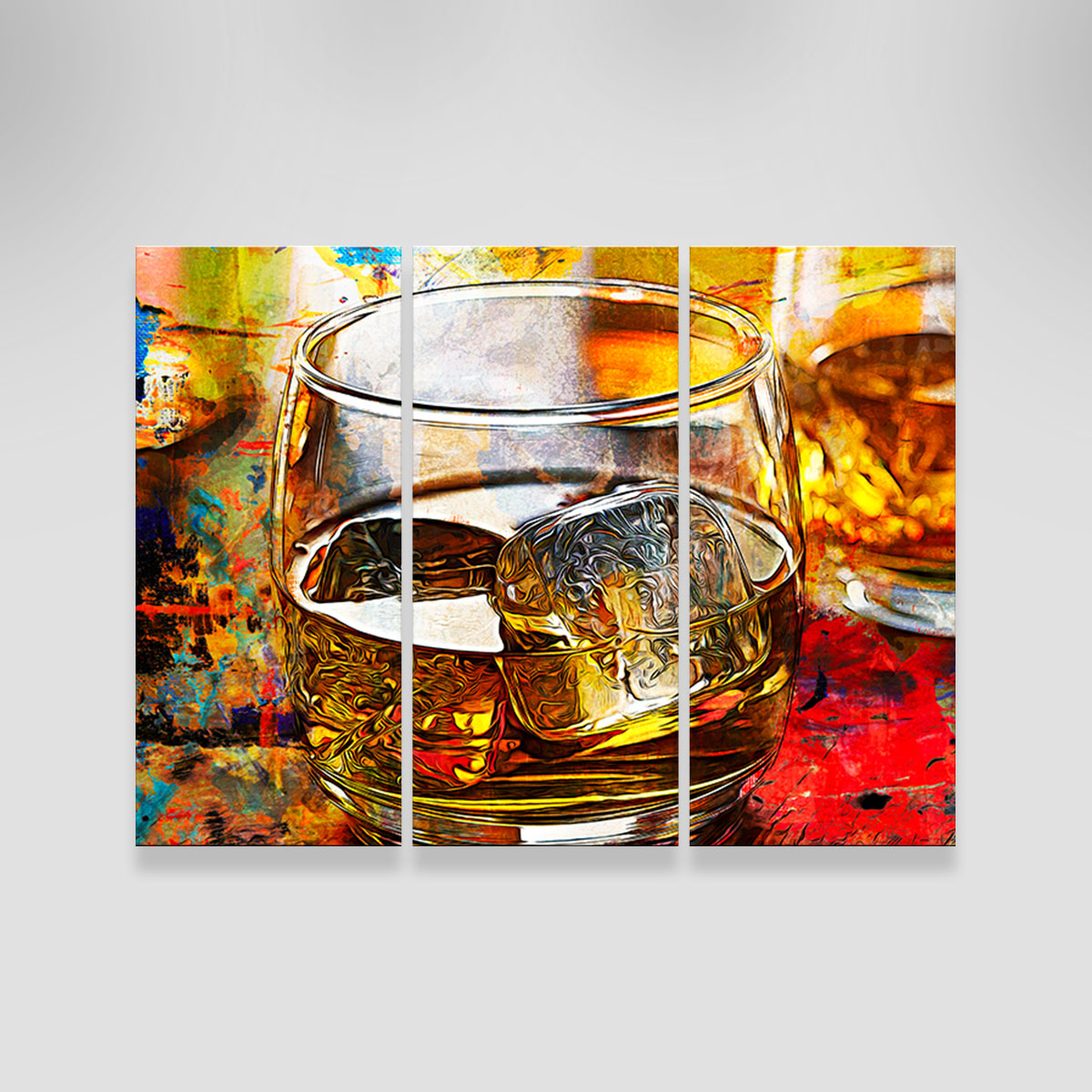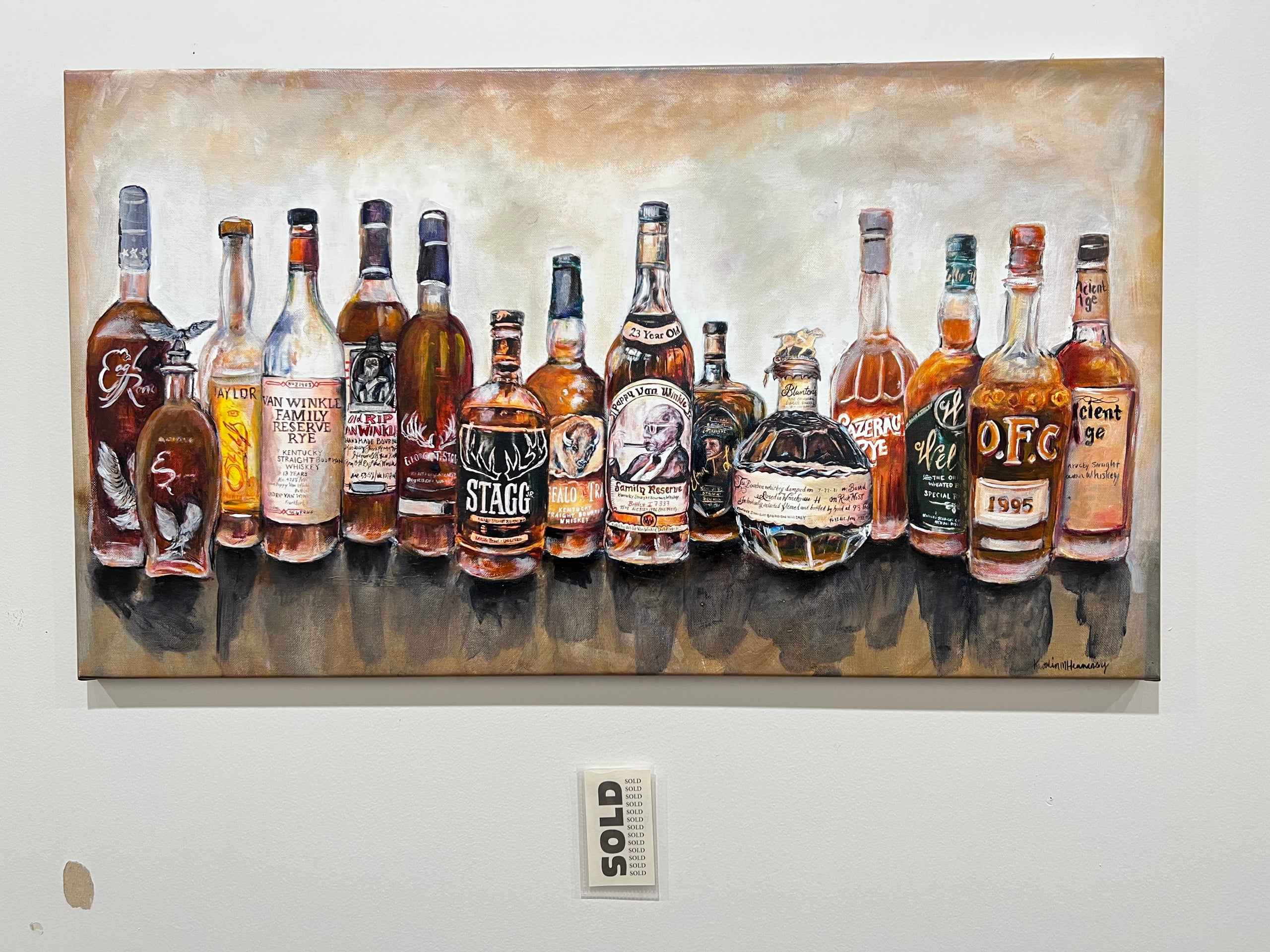Realism Art in the Whiskey Industry: Showing Moments of Purification
The Value of Whiskey Art in Celebrating Heritage and Craftsmanship in the Beverage Industry
The intricate relationship in between whiskey art and the celebration of heritage and workmanship within the drink industry can not be overemphasized. With attentively made bottles and labels, bourbon brands encapsulate their historical roots and the artisanal skills that define their manufacturing methods. This artistic measurement not only enhances market charm but additionally works as a conduit for social storytelling, promoting a much deeper connection between the craft and the consumer. As we explore the various aspects of this subject, interesting concerns about the effect of modern patterns on traditional methods develop, motivating further examination.
The Historical Origins of Whiskey
At the heart of bourbon's allure lies a rich tapestry of historical roots that map back to old worlds. The beginnings of scotch can be connected to the purification methods of the Sumerians and Babylonians around 2000 BCE, where very early forms of fermented grain beverages began to emerge. Nonetheless, it remained in the Center Ages that the art of purification developed significantly, specifically in Ireland and Scotland, causing the creation of scotch as we understand it today.
The term "scotch" itself originates from the Gaelic word "uisce beatha," suggesting "water of life." This expression highlights the social importance of whiskey in Celtic societies, where it was commonly linked with routines, parties, and public bonding. By the 15th century, distillation came to be an identified craft within reclusive areas, leading the way for the facility of legal distilleries.
As trade paths increased, bourbon's appeal grew, going beyond regional borders and catching the interest of connoisseurs worldwide. Whiskey Art. This historic journey reflects not only the workmanship behind scotch production yet likewise its essential role in social and cultural contexts, marking it as a considerable drink throughout history
Artistic Expression in Branding
Bourbon branding stands as a compelling junction of virtuosity and business, where aesthetic identity plays an essential role in shaping customer understanding. The appearances of scotch labels, packaging, and advertising and marketing materials mirror not only the brand's story yet likewise its core values and heritage. Through artistic expression, distilleries convey a narrative that resonates with customers, stimulating feelings and sparking links.
Making use of color, typography, and imagery in branding serves to distinguish items in a saturated market. For instance, traditional concepts may evoke a sense of authenticity and craftsmanship, while modern-day layouts can signify development and forward-thinking. This calculated imaginative instructions enhances brand recognition and commitment, allowing consumers to create an individual relationship with the whiskey they pick.
Moreover, imaginative expression in branding usually works as an event of regional heritage. Distilleries often incorporate regional signs or historic references right into their layouts, developing a local color that welcomes customers to take part in a wider social experience. Ultimately, the creativity behind whiskey branding not only boosts aesthetic allure yet likewise enhances the overall narrative of the brand, fostering a much deeper appreciation for the craftsmanship and heritage ingrained in each container.
Workmanship in Container Layout
The artistry noticeable in scotch branding prolongs past visual identity to include the workmanship associated with bottle design. Each bottle offers as a vessel not simply for the spirit within, yet additionally for the story it tells regarding its custom, origin, and quality. The layout procedure requires meticulous attention to detail, as aspects such as shape, closure, and material contribute dramatically read this article to the overall perception of the bourbon.
Workmanship in bottle design entails selecting high-quality glass that can improve the whiskey's shade and clarity, while additionally offering a tactile experience for the consumer. The shape of the container must be both visually appealing and useful, usually reflecting the heritage of the brand. Numerous distilleries go with one-of-a-kind shapes or printed logo designs that evoke a sense of credibility and background.
Moreover, the tag design and typography play a vital role in communicating the brand's story. Limited Edition. A well-crafted bottle not only mesmerizes the customer's eye however likewise strengthens the brand's dedication to top quality and tradition. This way, the craftsmanship of container design becomes an important facet of the whiskey experience, combining artistry with a profound respect for heritage
Social Value of Bourbon Art
Celebrating practice and craftsmanship, the social significance of whiskey art transcends plain appearances, intertwining with the historic and social stories of the areas where it comes from. Each bottle acts as a canvas, illustrating the one-of-a-kind stories, mythology, and practices that have actually formed regional whiskey-making methods. The detailed layouts typically mirror the heritage of the distillers, including signs and motifs that resonate with the society and values of their neighborhoods.

Furthermore, bourbon art plays a vital duty in common celebrations and celebrations, working as a tangible link between people and their shared experiences. By appreciating the artistry in whiskey packaging, consumers cultivate a deeper understanding and respect for the craft, ultimately enhancing their enjoyment of the drink itself.
Modern Trends in Whiskey Discussion
In the last few years, the discussion of scotch has progressed to mirror contemporary tastes and patterns while still recognizing traditional workmanship - Whiskey Art. Distilleries are increasingly concentrating on aesthetic aspects that boost the total drinking experience, bridging the void in between heritage and modernity
Cutting-edge container styles have actually emerged, usually integrating sustainable products and imaginative tags that tell compelling tales. Numerous brands now team up with local artists, instilling their items with distinct aesthetic expressions that resonate useful content with customers. In addition, limited-edition releases are frequently packaged in collectible containers, including worth and charm for connoisseurs.

Conclusion
In conclusion, scotch art offers as a crucial conduit for sharing the heritage and craftsmanship inherent in the beverage market. Through intricate branding, ingenious container designs, and culturally substantial artistic aspects, whiskey brands effectively recognize their practices and link with consumers.


Workmanship in container layout entails picking high-quality glass that can boost the bourbon's color and clarity, while additionally supplying a tactile experience for the consumer. In this method, the workmanship of container design becomes an essential aspect of the whiskey experience, combining virtuosity with an extensive respect for heritage.
In conclusion, whiskey art offers as a crucial avenue for revealing the heritage and craftsmanship fundamental in the beverage sector.